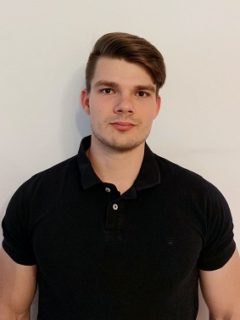Markus Lorke
Markus Lorke
Former Master student
Behaviour of primary neurons in hyaluronic acid based hydrogels in dependency of the matrix stiffness
Supervisors: Sonja Kuth, Prof. Aldo R. Boccaccini
Due to the presence of hyaluronic acid (HA) in the human body and the ECM (extracellular matrix) mimicking properties of hydrogels, HA based hydrogels are a promising candidates for tissue engineering applications, in particular in approaches designed to create scaffolds for repairing or regenerating neurological defects and diseases [1].
Providing the right mechanical and biological properties, such as matrix stiffness, plays a crucial role inmimicking the damaged tissue with the aim of achieving stimulatory effects and promoting proliferation [2]. The hydrogel properties can be tailored by modifying the crosslinking density, the components, or the oxidation of the HA. In this project, HA based hydrogels will be modified towards different mechanical responses and the effects on long-term stability and cell behaviour will be studied.
[1] P. Madhusudanan, G. Raju, and S. Shankarappa, “Hydrogel systems and their role in neural tissue engineering,” Journal of the Royal Society Interface, vol. 17, no. 162, 2020.
[2] A. H. Pandit, N. Mazumdar, and S. Ahmad, “Periodate oxidized hyaluronic acid-based hydrogel scaffolds for tissue engineering applications,” International Journal of Biological Macromolecules, vol. 137, 853–869, 2019.

